Texoma Striper Flies – One Off Depth Charges
striper flies for lake texoma fly fishing
Lake Texoma, Texas-Oklahoma, has one claim to fame – striper fishing. If you are within a hundred miles you have at least tried your luck with striped bass below the Denison Dam, and perhaps you have even given chase on a boat on the huge ocean-like lake that is Texoma.
I’ve described the fishing on the lake as something like the gopher carnival game. They pop up, you hit the gas and chase over there, wherever there is, and hit them before they go back down – if you’re carnival lucky. Topwater striper action can be exciting times punctuated by frustrating searches.
If you are in a warmer season, or they aren’t “on top,” you have a problem as a fly fisher. Why? Because if striper on Texoma aren’t shallow, or shallow blitzing, they’re deep — well beyond typical fly rod tactics can typically reach.
Another thing to consider is that trophy stripers are more rare in topwater action. Dinks are often overabundant in a blitz. That’s not to say it doesn’t happen though. There are plenty of stories of big shallow stripers pushing shad onto rocky Texoma shorelines, and even finding them off island flats at four to eight feet happens as well. On a lake the size of Texoma, in my opinion, those phenomenon fall under the category of LUCK.
So, if you take all this into account, you probably have already deduced, as my friend CK and I have, that we have to find a way to get deep on a consistent basis with a fly. The second given fact? YOU HAVE TO HAVE electronics to find Texoma striper action deep. CK certainly has the boat and the electronics. We certainly zeroed in on them earlier this year using conventional tactics on Texoma – http://texasflycaster.com/monday-afternoon-blowing-down-the-sidewalk/.
THE STRIPER – ROD – LINE – LEADER – FLY
Let’s just say we have our boat, our electronics and conditions chickens all in a row. That’s easier than getting down to 30 feet with a fly rod. Trust me.
For the sake of our fly line choice, let’s go with an eight weight rod – saltwater grade. Line? How about a full sinking line, like the Rio Leviathan in warmer times, and the In Touch Deep 7 for cold months. (Leviathan is a tropical cored line) We are still researching lines, as this goes to post.
Leaders, in my opinion, are pretty simple. If you want it to drop, keep it simple. Twenty pounds of straight fluorocarbon at nine feet should do the trick. I know some folks like shorter leaders, but I believe the sink rate of 20-pound fluoro to be plenty fast sinking and heavy – avoiding any hanging arc on the descent, or at bottom hang. And we all know how tough stripers are, so 20-pound will handle the abrasions.
Flies? Big, bigger, biggest. Bait patterns need to be worthy of a sizable striper’s effort to eat it. Big stripers eat incredibly large bait, and I have seen stripers and hybrids pass up smaller live baits until someone hooks on a huge shad – and it’s on! So we have to think and tie bigger than we do for anything else we target in Texas lakes. Think saltwater size flies.
As you can see, we have started this plan of catching stripers deep on fly with what I call “One Offs.” “One Offs” are a series of flies that are tied as one-of-a-kind flies designed to test the attitude of a fish, and deal with particular fly fishing conditions. So the slideshow of flies you see are big, and they’re heavy. I either used heavy eyes, or lead wire to give them the weight for a fast sink rate. I also want to vary the eye size to see if there’s a reaction to that as well.
While bulk creates a great silhouette, depending on the materials, it can also slow the sink rate. I used synthetics, and natural fibers to cover both bases. The fly that dominated my thinking on these One Offs was a basic Half-and-Half. (I based my Half-and-Half on the original in Bob Clouser’s book “Clouser’s Flies” Stackpole 2006) A few of those later, and the saltwater ideas began to move back into my thinking. As much as I like the “lay” of natural fibers, I like the way I can definitively shape synthetics into bait patterns after they are finished.
I spent minimal time on these flies, so if you think they look good by your standards, it’s probably only due to a liberal use of Clear Cure Goo (CCG). I could talk about CCG until I am blue in the face, but if you are serious about tying flies, durable flies, or fancy flies – you probably already have some.
So now all we have to do is drop these depth charges into a fish finder blackout on Texoma, and “see” what happens. It’s kind of like working in the oil fields. You want to know what’s going on down there? Well, it’s pretty dark.
NOTE – Stick with me on this one. I will tie it all together with a pretty little clinch knot when we finally see how it ends.
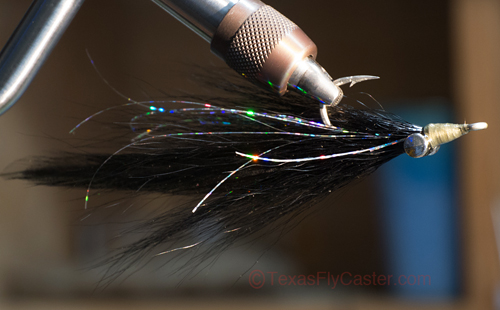
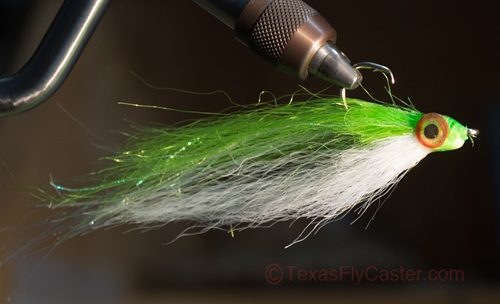
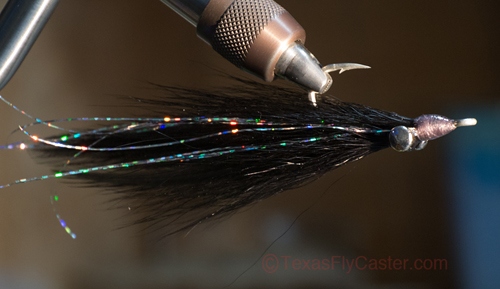
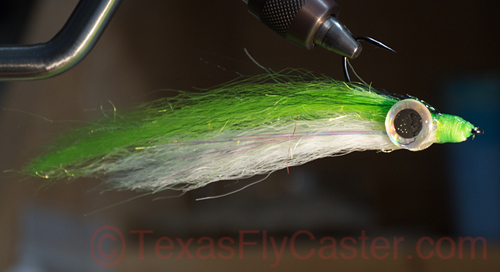
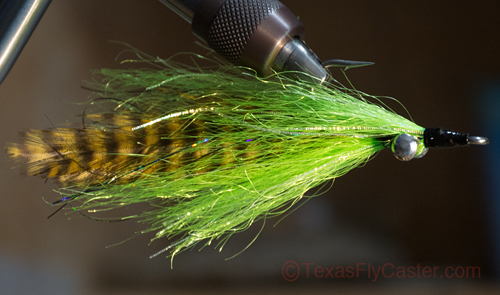
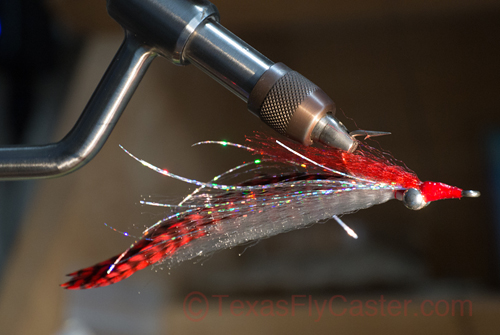
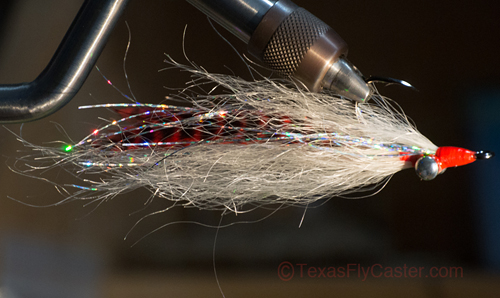
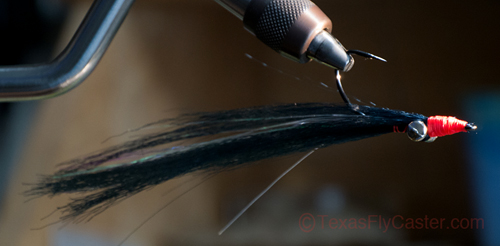
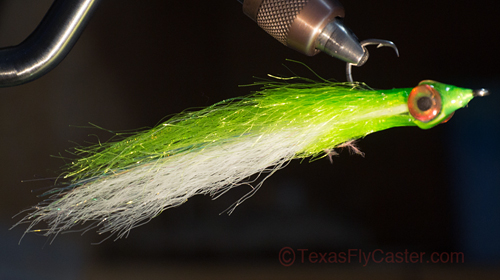
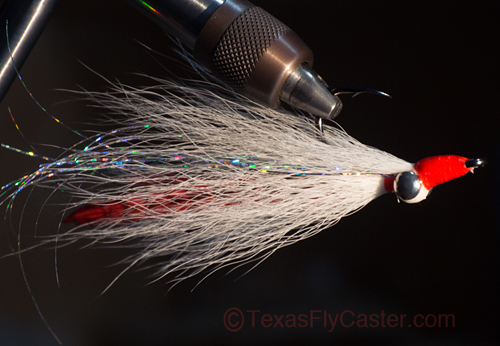






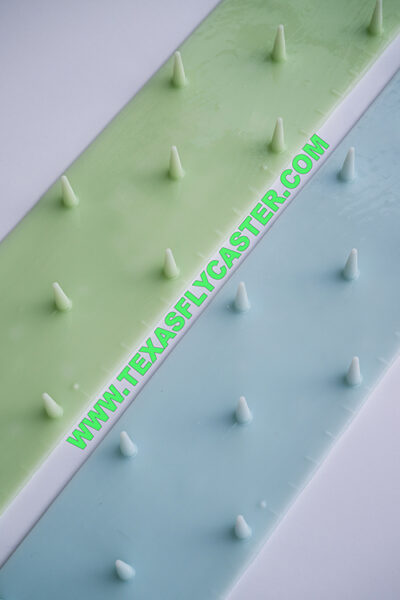











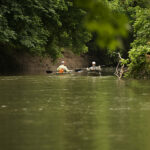
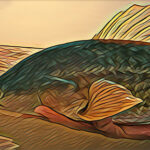

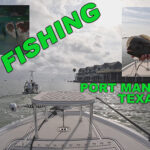


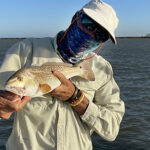


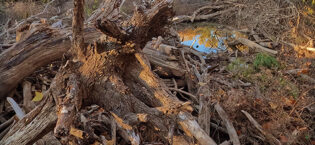
Well I have everything I need. 10wt depth charge sinking line big flies. I just need to get out and find them!